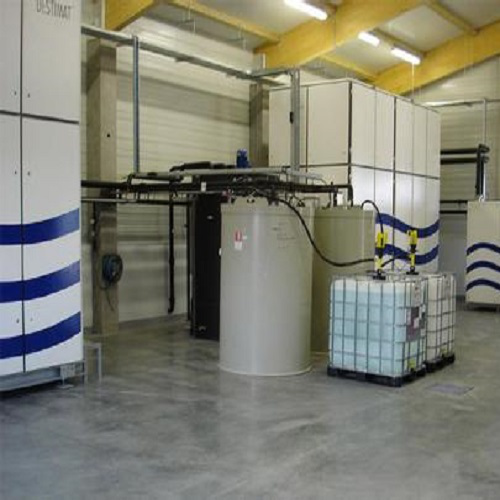Prefabricated eco-house, fast assembly
Steel pipes, Laser machinery, UAV
Water/gas treatment, Cooling water

Prefabricated eco-house, fast assembly
Steel pipes, Laser machinery, UAV
Water/gas treatment, Cooling water


Because emulsifiers are all surfactants, when they are added to water, the free energy of oil-water interface is greatly reduced to the lowest value, and then oil is dispersed in water. At the same time, the surfactant also produces ionization, which makes the oil droplets charged, and adsorbs a layer of water molecules fixed, forming a hydrated ion membrane, while the reverse ions in the water are adsorbed around its surface, divided into a fixed adsorption layer and a movable diffusion layer, forming a double layer.
In this way, the oil droplets are surrounded by a layer of elastic, solid and charged hydration ion membrane, which prevents the possible combination of oil droplets when they collide with each other, and enables the oil droplets to stabilize in water for a long time and become white emulsifiers. The PH value of the prepared emulsifier is generally between 8 and 9, some even as high as 10-11.

Emulsion wastewater from metal processing and foundry industries is mainly treated by the following processes:
Emulsion wastewater is collected and entered into oil separating pool for the purpose of separating and removing oil slick in water. The effluent from oil separating pool enters into regulating pool, which mainly regulates water quality and quantity.
The regulating pool is pumped into the demulsification pool, stirred and added with demulsifier reaction. The emulsified oil is destabilized and the water is discharged into the air floatation pool. The suspended matter is floated by adding medicine and dissolved air to remove the suspended matter in the water.
The effluent from the air floatation tank enters the anaerobic reaction tank. Anaerobic reactor is a kind of reactor that uses the function of anaerobic bacteria to remove refractory organic matter from wastewater. The effluent of anaerobic tank enters into anoxic tank to remove organic matter and total nitrogen. The effluent from the anoxic tank enters the contact oxidation tank.
The fixed biological filler is used as the carrier of microorganisms in the contact oxidation process, and the aeration system is used to supply oxygen to microorganisms in the reactor. It overcomes the disadvantage of easy loss of suspended activated sludge and can maintain high biomass.
The effluent from the contact oxidation tank enters the AC reaction tank. AC reactor uses activated carbon (AC) to adsorb organic matter in water on the surface of activated carbon, and then through flocculation and sedimentation to further remove organic matter. The effluent from AC sedimentation tank enters the drainage tank. The main purpose of the drainage basin is to adjust the pH to ensure that the effluent meets the standard.
The excess sludge from demulsification tank, air floatation tank, contact oxidation tank and sedimentation tank enters the sludge concentration tank; the sludge is lifted by sludge pump into the sludge dewatering machine room for concentration and dewatering, and the dewatered mud cake is regularly transported to the outside for treatment.
Copyright All Rights Reserved @Shanghai Chemmah Industrial Co., Ltd.
Address: No. 528, North Yanggao Rd, Pudong Dist, 200137, Shanghai, China
Email: sales@chemmah.com
Tel and WhatsApp: +86 158 6847 7948